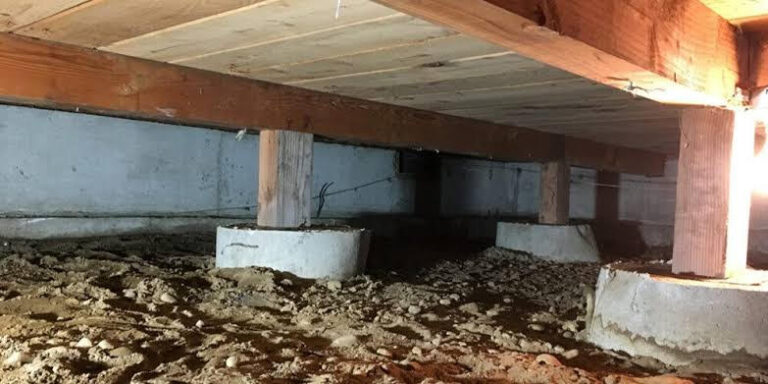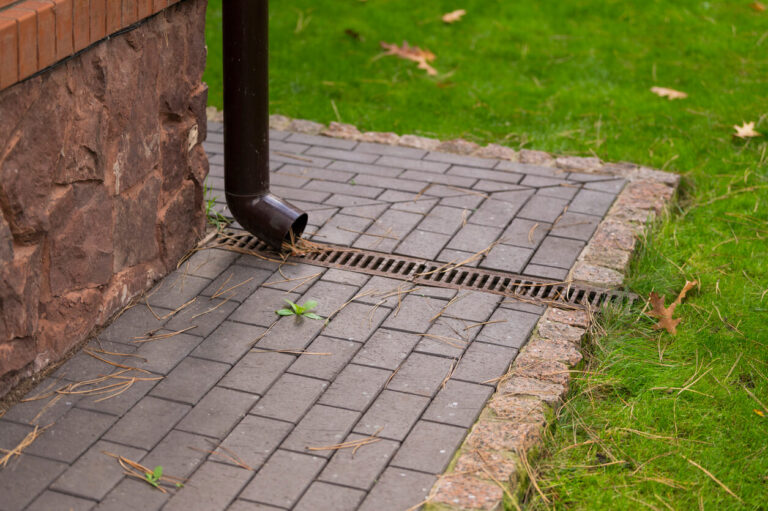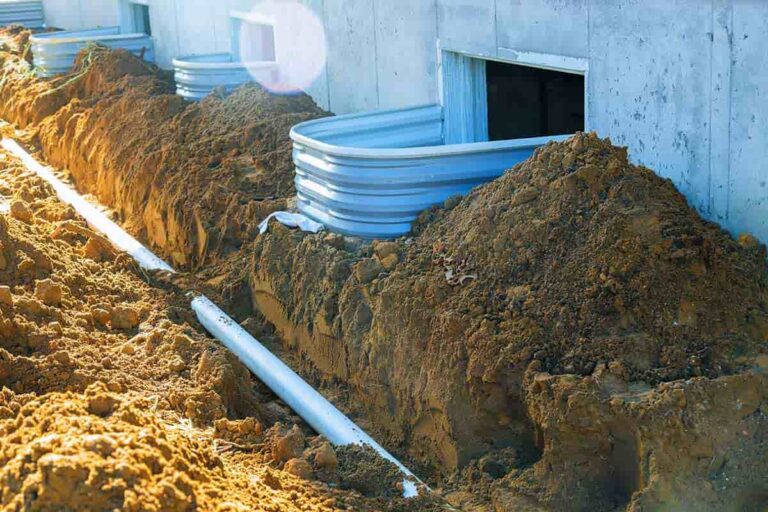Pricing New Gutters for Your Home: What to Expect
A Complete Guide to Pricing New Gutters for Your Home: What to Expect and How to Budget
Are you considering installing new gutters for your home? Pricing new gutters can be a complex task, but with the right guidance, you can navigate this process seamlessly. In this comprehensive guide, we will walk you through everything you need to know about pricing new gutters for your home, including what to expect and how to budget.
The importance of gutters for your home
Gutters play a crucial role in protecting your home from water damage. They collect rainwater and direct it away from your foundation, preventing erosion, basement flooding, and other costly issues. Without functioning gutters, water can seep into your walls, causing mold growth, rotting wood, and compromising the structural integrity of your home.
Investing in new gutters is an essential part of maintaining your property and ensuring its longevity. By having a properly installed and well-maintained gutter system, you can safeguard your home against the damaging effects of water.
Signs that you need new gutters
Before diving into the pricing aspect, it’s important to identify whether your home actually needs new gutters. While gutters are designed to last for many years, they do require periodic inspection and maintenance. Here are some signs that indicate it might be time to replace your gutters:
- Visible damage: Check for any cracks, holes, or rust spots on your gutters. These can lead to leaks and inefficient water flow.
- Sagging or pulling away: If your gutters are sagging or pulling away from the roofline, it’s a sign that they are not properly secured and might need replacement.
- Water overflow: If you notice water overflowing from your gutters during rainfall, it could indicate a clog or inadequate gutter capacity.
- Peeling paint or stains: Water overflow and improper drainage can cause paint to peel or leave stains on the exterior walls of your home.
- Foundation issues: Cracks in your foundation or pooling water around your home’s perimeter are indicators of gutter problems.
By being proactive and addressing these signs early on, you can prevent further damage and save costs in the long run.
Different types of gutters and their pros and cons
When it comes to selecting new gutters, you have various options to choose from. Each type offers different benefits and considerations in terms of durability, appearance, and cost. Here are some common types of gutters:
- Aluminum gutters: Aluminum gutters are lightweight, durable, and resistant to rust. They are a popular choice for many homeowners due to their affordability and ease of installation. However, they may not be as strong as other materials and can dent easily.
- Vinyl gutters: Vinyl gutters are low-cost and easy to install. They are resistant to rust and corrosion, making them a low-maintenance option. However, they can become brittle over time and may not withstand extreme weather conditions.
- Copper gutters: Copper gutters add an elegant and timeless look to your home. They develop a beautiful patina over time and are highly durable. However, copper gutters are more expensive upfront and require professional installation.
- Steel gutters: Steel gutters are incredibly strong and can withstand harsh weather conditions. They are resistant to dents and provide a long lifespan. However, they are more expensive than other options and may require regular maintenance to prevent rust.
Consider your budget, climate, and aesthetic preferences when choosing the type of gutters for your home. It’s also important to consult with a professional to ensure you select the most suitable option for your specific needs.
Factors that affect the cost of new gutters
The cost of new gutters can vary depending on several factors. Understanding these factors will help you estimate the overall expenses and make an informed decision. Here are the key aspects that affect the pricing of new gutters:
- Material: As mentioned earlier, the material you choose for your gutters will have a significant impact on the cost. Aluminum and vinyl tend to be more affordable options, while copper and steel are higher-end choices.
- Size and length: The size and length of your gutters will determine the amount of material required. Larger homes or areas with heavy rainfall may require wider gutters and downspouts, which will increase the overall cost.
- Gutter style: There are different styles of gutters available, such as K-style and half-round. The style you choose can affect the complexity of installation and, consequently, the cost.
- Accessibility: If your home has multiple stories or difficult-to-reach areas, the installation process may require additional equipment or labor, resulting in higher costs.
- Additional features: Downspouts, gutter guards, and other accessories can enhance the functionality and appearance of your gutter system. However, they will add to the overall expenses.
By considering these factors, you can better estimate the cost of new gutters and plan your budget accordingly.
How to budget for new gutters
Setting a budget for your gutter project is essential to avoid overspending and ensure you get the best value for your investment. Here are some practical tips to help you budget for new gutters:
- Research and gather quotes: Start by researching different gutter installation companies and collecting quotes from multiple sources. This will give you a range of prices to compare and help you identify any unusually high or low estimates.
- Consider long-term costs: While it may be tempting to opt for the cheapest option, keep in mind the long-term costs associated with maintenance and repairs. Investing in higher-quality materials upfront can save you money in the long run.
- Factor in additional expenses: In addition to the cost of gutters, consider any additional expenses such as gutter guards, downspouts, and installation fees. These can significantly impact your overall budget.
- Allocate for unforeseen circumstances: It’s always a good idea to set aside some extra funds for unexpected issues that may arise during the installation process. This will help you avoid financial stress and ensure the project is completed smoothly.
- Explore financing options: If the cost of new gutters exceeds your immediate budget, consider exploring financing options such as personal loans or home improvement loans. These can help you spread out the payments over time without compromising the quality of materials or installation.
By following these budgeting tips, you can plan your gutter project effectively and make informed decisions about your expenses.
Getting quotes from gutter installation companies
Once you have determined your budget and identified your preferred gutter materials and styles, it’s time to gather quotes from different gutter installation companies. Here’s how to go about it:
- Research reputable companies: Start by researching local gutter installation companies with a good reputation and positive customer reviews. Look for companies that specialize in gutter installation rather than general contractors.
- Request multiple quotes: Reach out to at least three different companies and request quotes for your specific gutter project. Provide them with accurate measurements and details to ensure accurate estimates.
- Compare the quotes: Once you receive the quotes, carefully compare them to identify any significant differences in pricing or services offered. Consider the reputation and experience of each company as well.
- Ask for clarification: If any aspect of the quotes is unclear, don’t hesitate to reach out to the companies and ask for clarification. It’s important to have a clear understanding of what is included in the pricing.
- Consider value, not just price: While it’s natural to focus on the price, remember to consider the overall value offered by each company. Look for warranties, guarantees, and quality of materials and workmanship.
By following these steps, you can make an informed decision and choose a reputable gutter installation company that meets your budget and requirements.
Understanding the pricing structure for gutter installation
To fully understand the pricing structure for gutter installation, it’s important to know how companies typically calculate their costs. While the specific pricing methods may vary, most companies consider the following factors:
- Linear feet: Gutter installation companies often charge per linear foot of gutter. The longer your gutters, the higher the cost will be.
- Downspouts: Additional downspouts may incur extra charges. Companies may charge per downspout or include them in the overall linear footage pricing.
- Labor costs: The complexity of the installation process and the time required will impact the labor costs. Difficult-to-reach areas or intricate gutter styles may increase the labor charges.
- Materials and accessories: The type of material and any additional accessories you choose will contribute to the overall cost. Companies may have different pricing tiers based on the material selected.
Make sure to discuss the pricing structure with the gutter installation company and have a clear understanding of how they calculate their costs. This will help you compare quotes accurately and avoid any surprises.
Additional costs to consider when installing new gutters
When budgeting for new gutters, it’s important to factor in any additional costs that may arise during the installation process. Here are some common additional expenses to consider:
- Gutter guards: Gutter guards are accessories that help prevent debris from clogging your gutters. While they can save you time and effort on maintenance, they do come with an additional cost.
- Removal and disposal: If you’re replacing existing gutters, there may be a cost associated with removing and properly disposing of the old gutters. Discuss this with the installation company to understand if it’s included in their pricing.
- Repairs and modifications: Depending on the condition of your home, there may be repairs or modifications required before the new gutters can be installed. These could include fixing fascia boards, repairing roof damage, or adjusting the slope for proper water flow.
By considering these additional costs, you can ensure that your budget covers all aspects of the gutter installation process.
DIY vs. professional gutter installation: Which is right for you?
One question that often arises when pricing new gutters is whether to tackle the installation as a DIY project or hire professionals. While DIY can save you money upfront, it’s important to weigh the pros and cons before making a decision.
DIY Gutter Installation:
Pros:
- Cost savings: By installing the gutters yourself, you can potentially save on labor costs.
- Flexibility: You have control over the timeline and can work at your own pace.
- Learning experience: DIY projects can be rewarding and provide an opportunity to learn new skills.
Cons:
- Lack of expertise: Gutter installation requires specific knowledge and skills to ensure proper functionality and longevity.
- Safety risks: Working at heights can be dangerous, especially if you’re not experienced or equipped with the necessary safety gear.
- Potential for mistakes: Improperly installed gutters can lead to costly repairs and further damage.
Professional Gutter Installation:
Pros:
- Expertise and experience: Professional installers have the knowledge and skills to complete the installation correctly.
- Time savings: Hiring professionals allows you to focus on other aspects of your home while they handle the gutter installation efficiently.
- Warranty and guarantees: Reputable companies often offer warranties on their workmanship and materials.
Cons:
- Higher upfront cost: Professional installation comes with labor costs, which can increase the overall expenses.
- Scheduling coordination: You may need to align your schedule with the availability of the installation company.
Consider your level of experience, available time, and budget when deciding between DIY and professional installation. If you’re unsure, consulting with a professional can provide valuable insights and help you make an informed decision.
Conclusion: Making an informed decision about pricing new gutters
Installing new gutters for your home is a significant investment, and pricing them accurately is crucial to avoid unnecessary expenses and ensure long-term functionality. By understanding the importance of gutters, recognizing signs for replacement, exploring different types of gutters, and considering the factors that affect pricing, you can make an informed decision.
Setting a budget, gathering quotes, and understanding the pricing structure will help you plan your expenses effectively. Additionally, considering additional costs and deciding between DIY and professional installation will further contribute to a successful gutter project.
Remember, gutters play a vital role in protecting your home from water damage, and investing in high-quality materials and professional installation will provide peace of mind and long-term value. Take your time, do your research, and consult with experts to make the best decision for your home and budget.







